TL;DR
A hypo is when glucose drops too low. In physiology terms that’s <3.3 mmol/L (60 mg/dL), but in real life we use <4.0 mmol/L (70 mg/dL) as the safety threshold because CGMs have measurement error in the low range. Treat hypos with pure glucose, sized to body weight, then recheck after 20 minutes. Sugar-based foods are too slow and often trigger rebound highs.
Simple
Watch the video or read on:
First, a quick recap. What is a hypo?
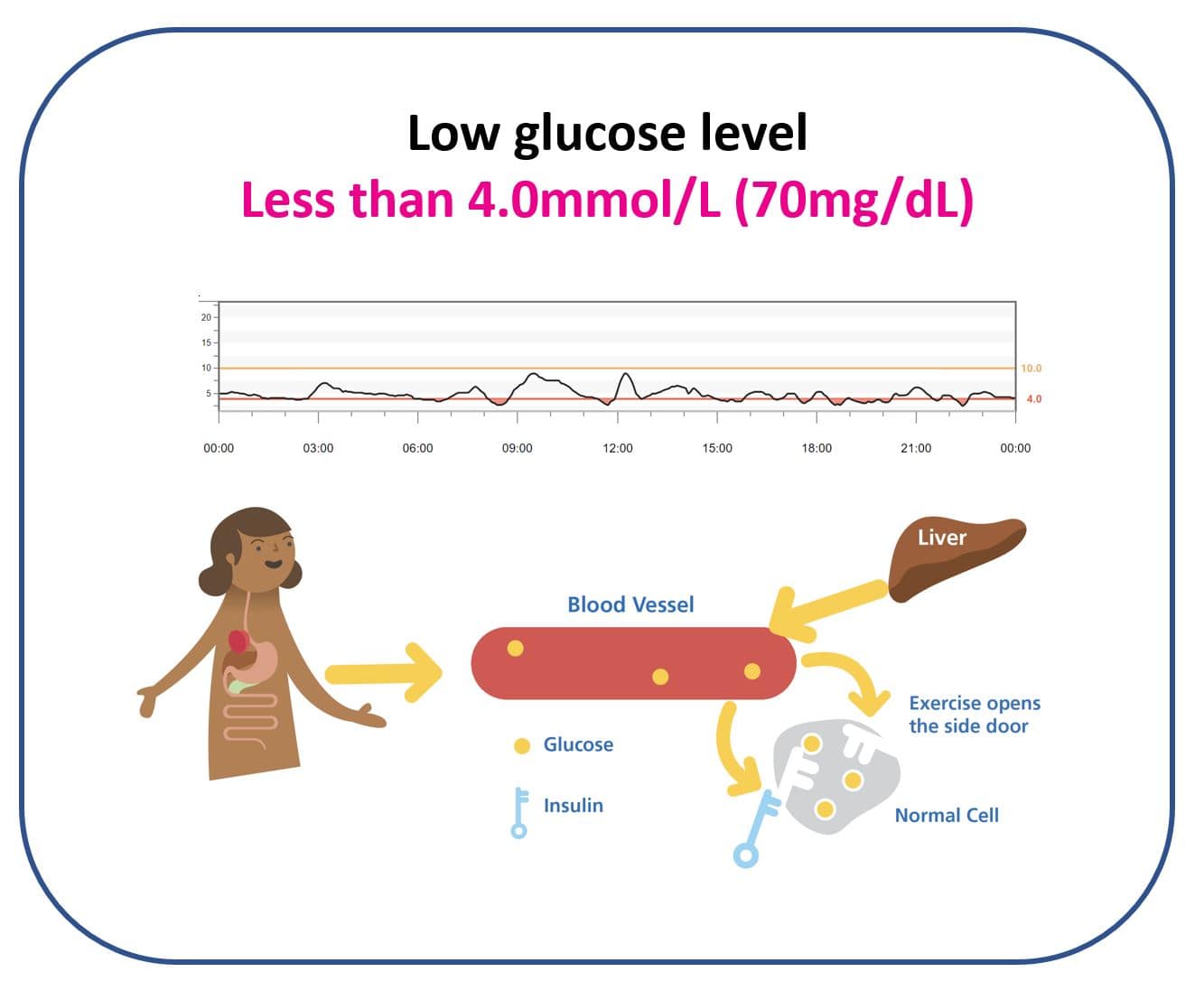
Deep
What glucose level counts as a hypo?
Technically, hypoglycaemia is a glucose level below 3.3 mmol/L (60 mg/dL). People without diabetes often sit between 3.3–6.7 mmol/L (60–120 mg/dL) all day, every day — that’s the biologically “normal” range.
So why do we treat at <4.0 mmol/L (70 mg/dL)?
Because CGMs are imperfect at low levels. In modern CGM accuracy studies, a reading in the low range is considered “accurate” if it’s within 0.8 mmol/L (15 mg/dL) of true blood glucose (measured with lab-grade comparators like YSI).
Meaning: if your true blood glucose is 3.2 mmol/L (58 mg/dL), your CGM can read up to ~0.8 mmol/L higher and still be labelled accurate. That puts the CGM near 4.0 mmol/L (70 mg/dL). So setting your low alert and treatment threshold at 4.0 mmol/L catches almost all true hypos before they become physiologically dangerous.
If you set your alert at 3.3 mmol/L (60 mg/dL), a “safe” CGM error could hide a true glucose around ~2.6 mmol/L (47 mg/dL) with no alarm. That’s a risky game.
What should you treat a hypo with?
The classic advice is “15 g of sugar”. Bin that. Replace it with:
Treat hypos with glucose only, and dose it according to body weight.
Why glucose? Because it’s the fastest mover up. Pure glucose starts raising blood glucose in about 10 minutes and has done its job by ~20 minutes. That’s why you recheck at 20 minutes, not 5 or 10.
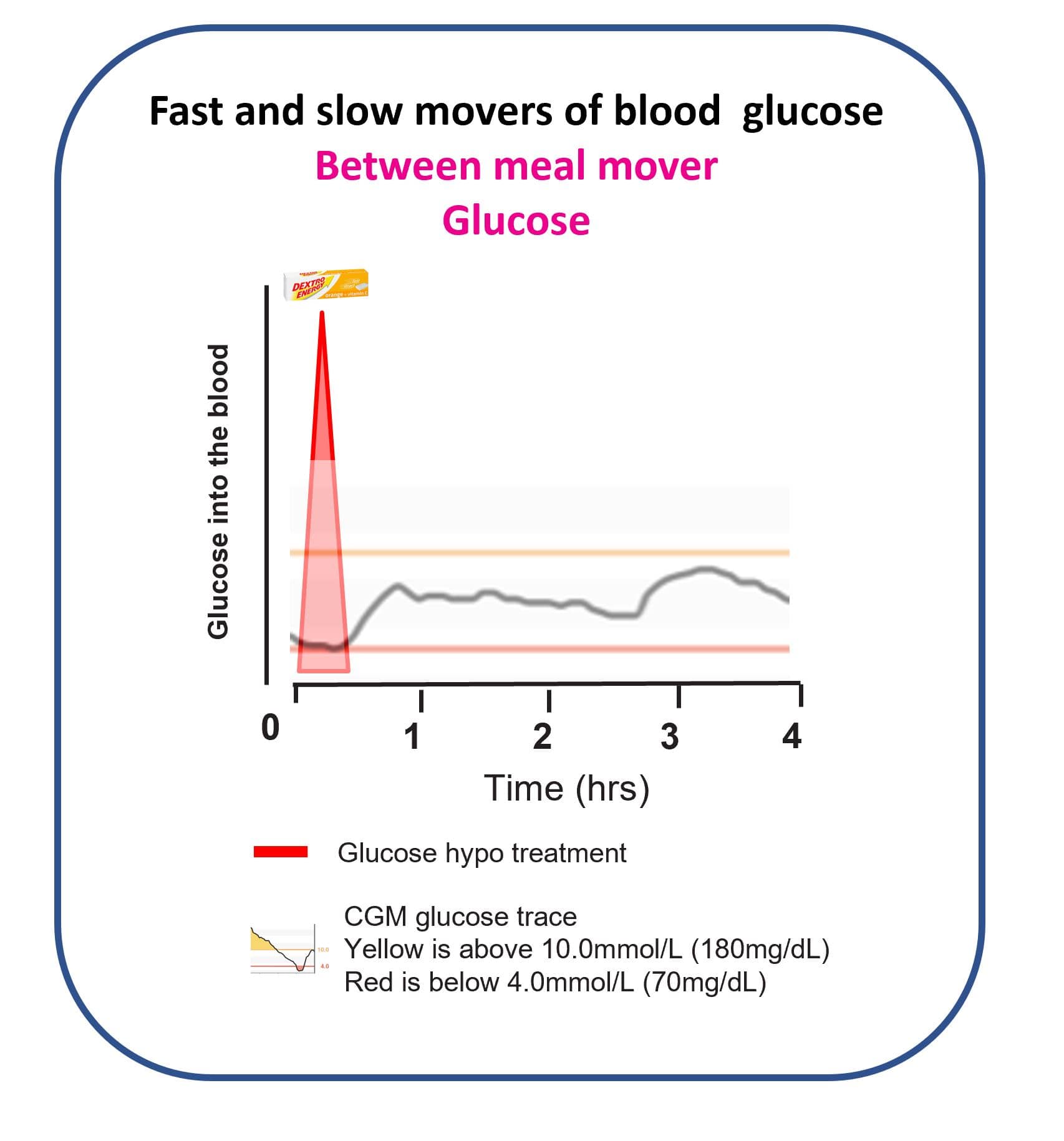
Why body weight matters
Body weight is a rough proxy for blood volume and muscle mass. Heavier bodies have more blood to “fill” with glucose and more tissue pulling glucose out of the blood — especially after heavy bolus insulin or exercise. So treatment needs scale with weight.
This chart shows a simple weight-based guide:
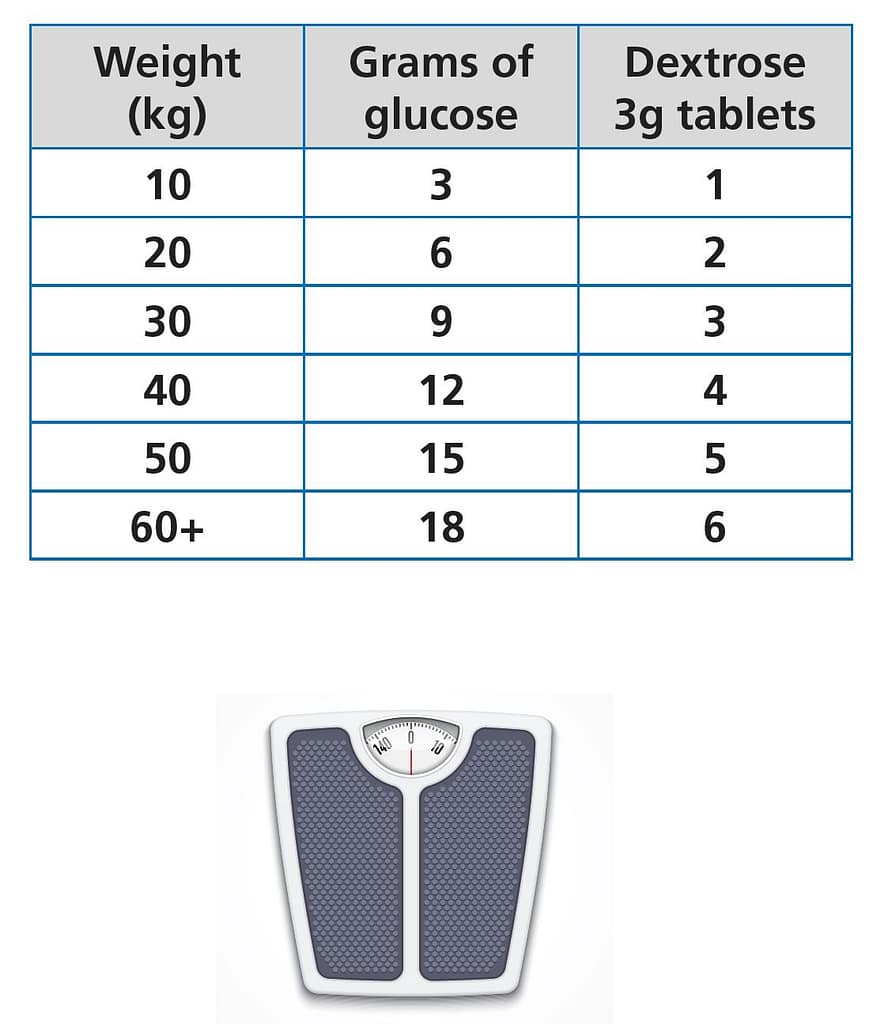
Why cap treatment at ~18–20 g? The intestine absorbs glucose at about 1 g per minute. If you take more than ~20 g and recheck at 20 minutes, you’re just stacking unabsorbed glucose — which often causes a delayed spike and sometimes GI fallout. Better to take a sensible first dose, then repeat if still low.
Why glucose tablets are the best tool
- Cheap, portable, stable (don’t go off).
- Small, consistent doses (usually 3–4 g per tab), easy to split for precision.
- Treating a hypo is medicine, not a snack. “Tasty treats” blur that line and drive overeating loops.
- Liquid “glucose” drinks (Lucozade, Gatorade, etc.) are messy: formulations change, some use mixed sugars, they’re bulky, hard to measure precisely, and expensive.
- If you want faster swallowability, take glucose tabs with water. Simple and free.

What about trend arrows and prevention?
Yes — you should treat differently depending on whether you’re preventing a hypo or already in one, and whether your CGM arrow is flat, single-down, or double-down. That full decision table lives in Dynamic Glucose Management, specifically the MATCH section of GAME–SET–MATCH.
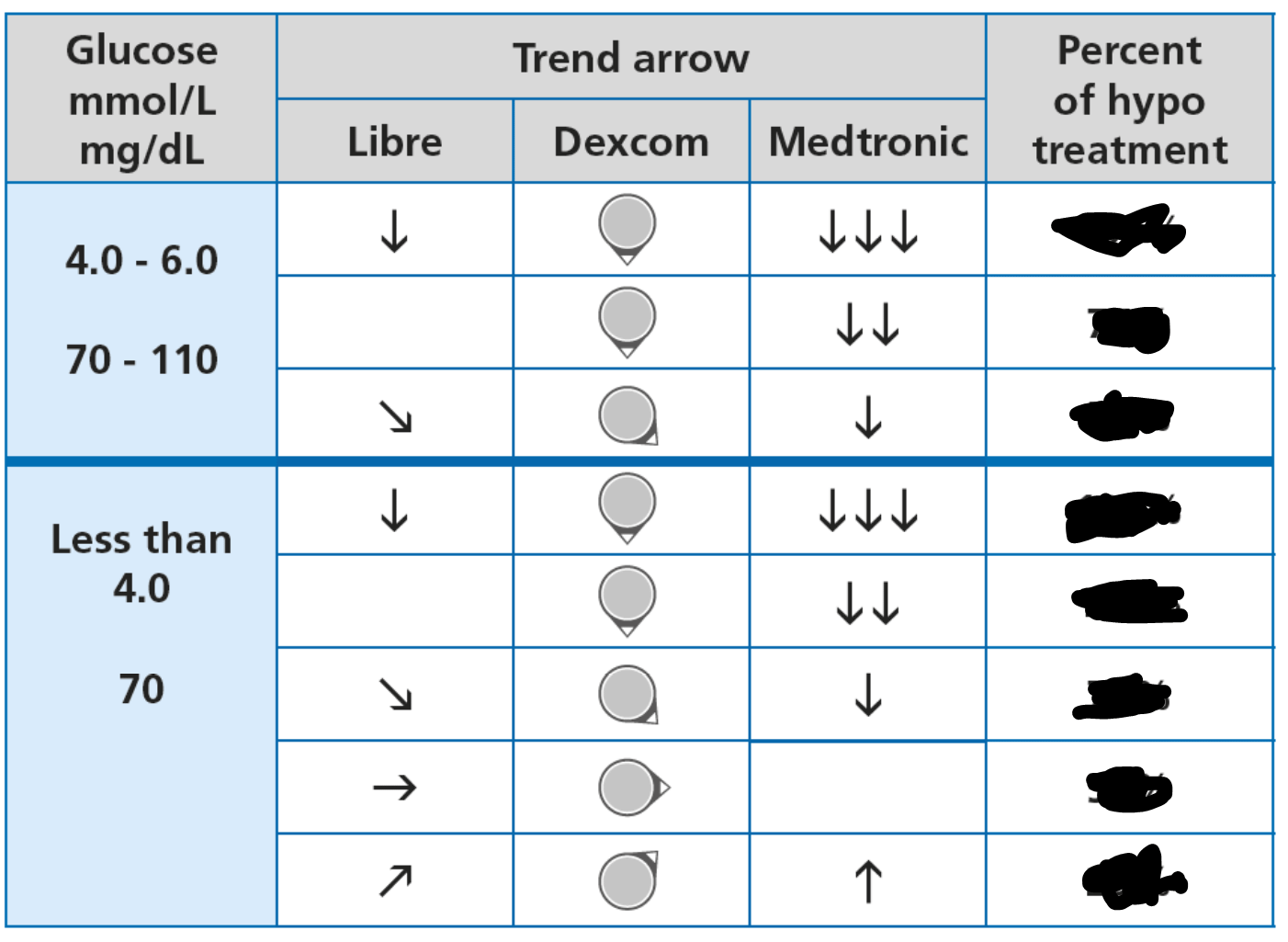
Why sugar is a rubbish hypo treatment
Sugar is slow. A sugar-based treatment can take up to an hour to fully correct a hypo. People re-treat too early, stack carbs in the gut, then spike later.
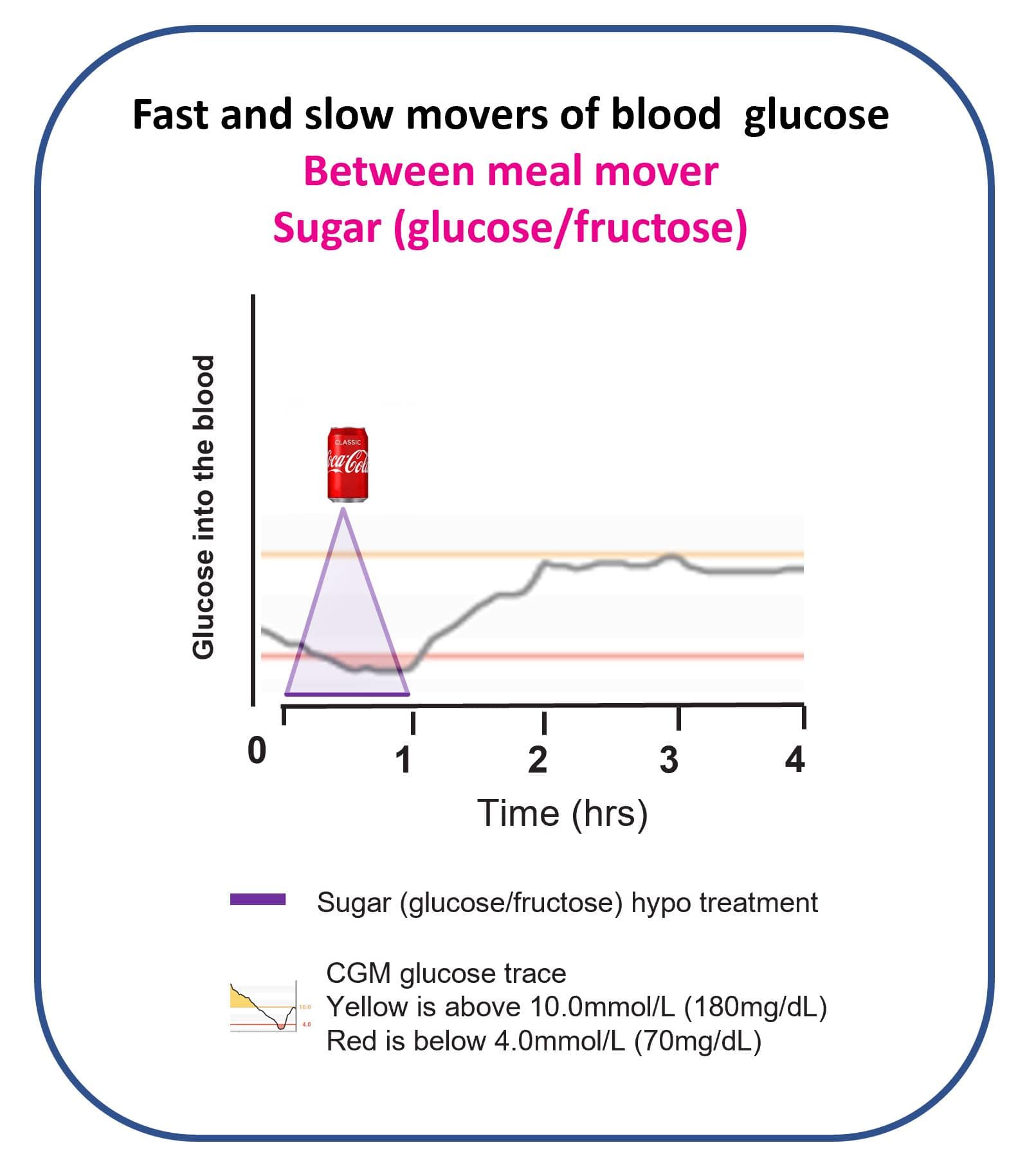
Mechanistically: sugar is glucose + fructose. The glucose half helps quickly; the fructose half doesn’t — it goes to the liver and can trigger hunger/over-eating cascades (“overeating switch”). That’s one reason sugar treatments so often end in rebound highs.
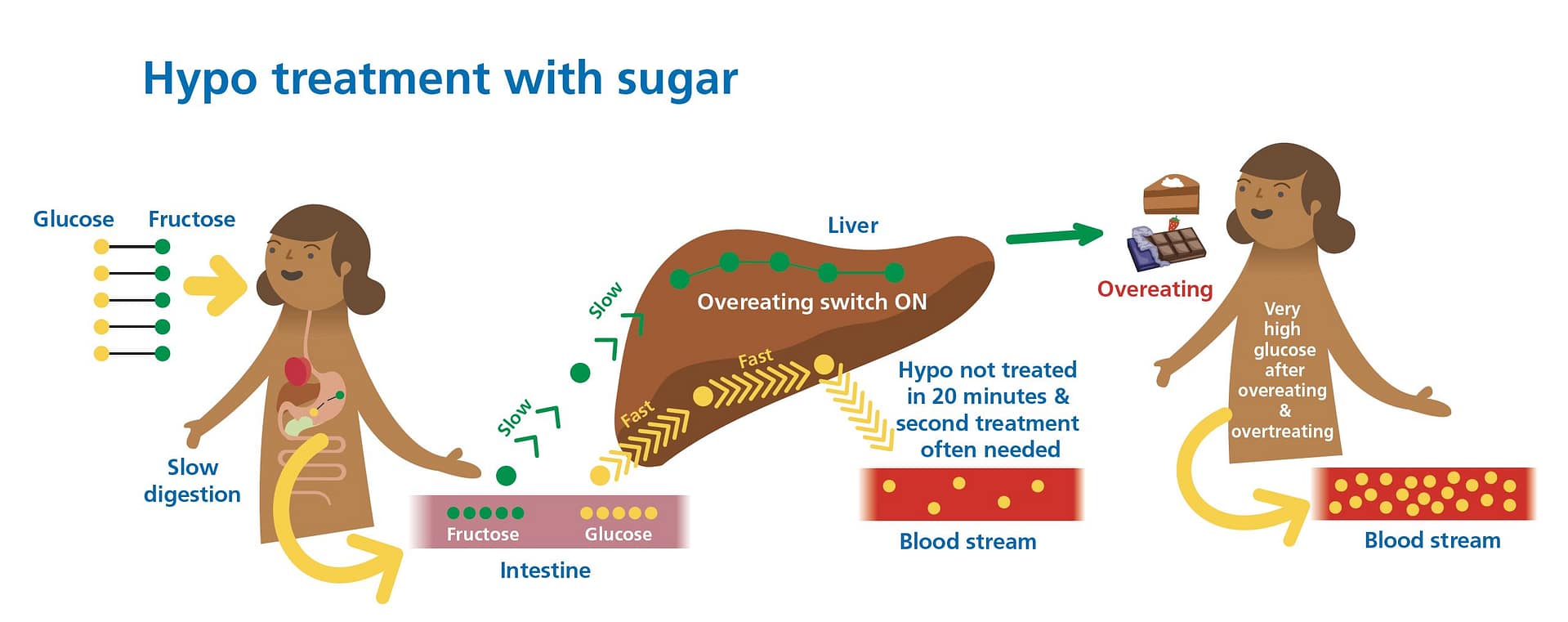

Are temporary basal reductions useful for hypos?
No. Temporary basal changes are the slowest mover of glucose. They’re too delayed to prevent or treat an imminent hypo, which is why we leaned on this point in Basal insulin.
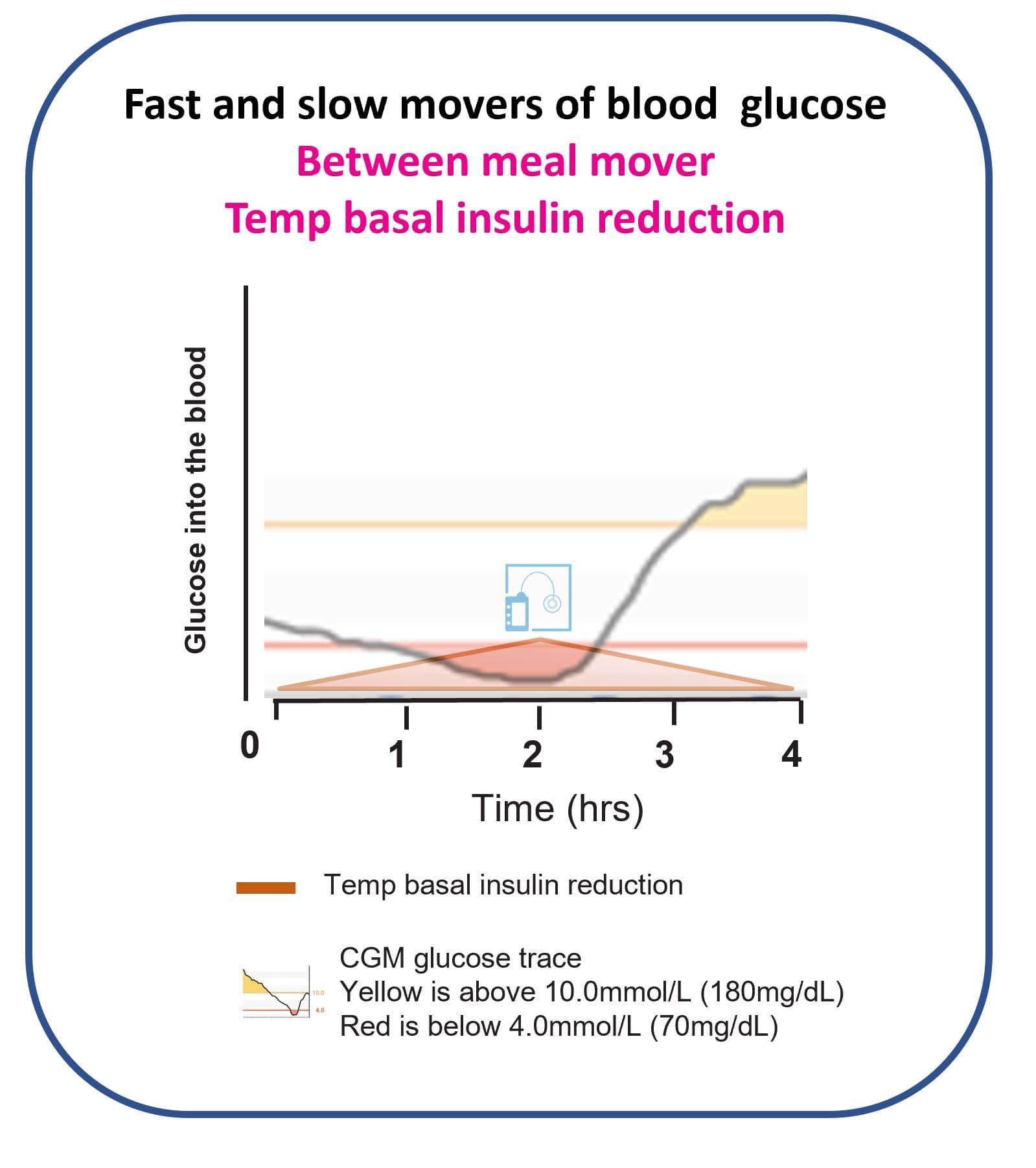
Practical
Set your low alert at 4.0 mmol/L. Treat with glucose tabs based on weight, recheck at 20 minutes, and repeat only if still low. Use trend arrows to scale the dose (full matrix in Dynamic Glucose Management). Avoid sugar-based treatments unless you have zero glucose available.
References
What’s next
Next step: Fast and slow movers of glucose.

